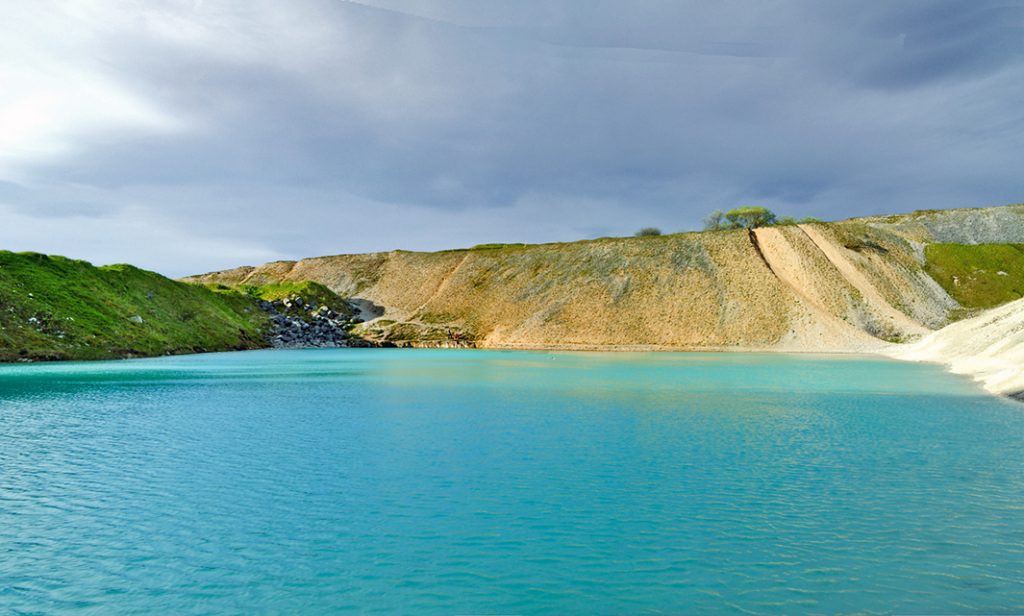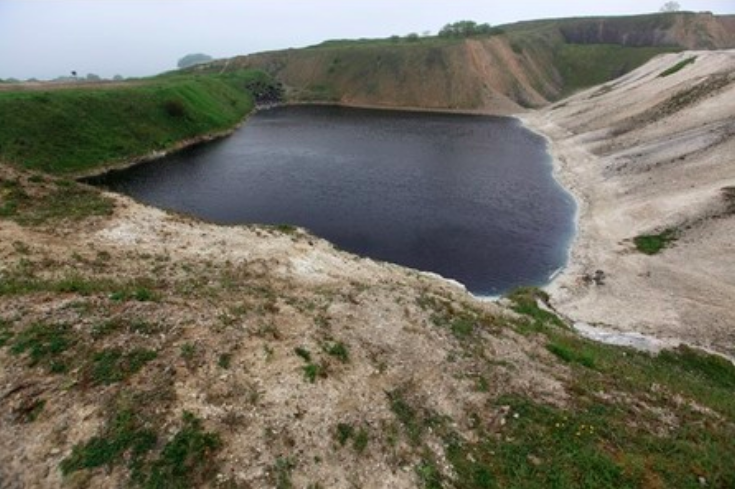The Swimming Pool That Was Literally Blacked Out

If you’re into Instagram and you were near the lake above, you’d almost certainly have taken a picture and shared it with your friends. It’s idyllic-looking — the rolling green hill to the left, the springing cliffside in the distance, and a pool of enticing blue water just waiting for you to take a swim. But that would be a very, very bad idea. No, not Instagramming a picture; that’d be fine. Swimming, though, would be a huge mistake — the water is toxic, despite the blue hue.
The picture above comes from Harpur Hill, a small village in the English county of Derbyshire. It’s not a naturally-occurring lake, but rather a historical accident. For years, there was a rock quarry there, but when it fell into disuse, nature took over; groundwater ran into the formerly open pit and rainwater helped keep it filled. As of around 2005, the Harpur Hill quarry has taken on a new name — the Blue Lagoon.
But unlike the azure waters of the Caribbean or Mediterranian, the Blue Lagoon’s cerulean waters aren’t an invitation to swim. Rather, they’re a warning. The Lagoon’s hue comes from the caustic residue from the calcium oxide left exposed in the quarry, and it’s not a good swimming experience. The pH of the water level, according to Slate (from which that photo comes) is 11.3, which means that it is more like swimming in bleach (pH 12.3) or ammonia (11.5) than water (7.0). Oh, and the lagoon is incredibly polluted, too — there are all sorts of horrors hiding beneath the water’s surface, ranging from regular old trash to old cars, and from dead animals to human waste.
And yet, signs telling people to stay out — even some which spell out these dangers — haven’t worked. People still went for a dip, only to come out with itchy eyes, irritated skin, and worse. In 2009, a young boy even lost his life after swimming there. So in 2013, officials, hoping to deter people from jumping into the crisp teal waters, changed it up a bit, as seen below.

That’s right: they turned the blue lagoon black.
The idea was simple — make the body of water look as dangerous as it was. As one local businesswoman told the BBC, the plan was effective; visitors “don’t think they’re on holiday in the Bahamas any more, they know they’re in Harpur Hill.” And by and large, they stayed out of the water. Atlas Obscura reported that “according to locals, disappointed weekend road trippers have been turning back when they spot the newly inky lagoon.”
While the black ink ran out in 2015 and the lagoon temporarily returned to its “natural” color, the local authorities have since replenished the dye. Now, if visitors come across the lake, they’ll hopefully get the message: stay out.
Bonus fact: There’s another artificial Blue Lagoon — one which you can swim in. In 1976, a geothermal powerplant opened in Iceland, and the company that ran the power plant collected the superheated runoff water in nearby pools so the water could cool for re-use. A few years later, Wikipedia notes, “a psoriasis patient bathed in the water and noted that the water alleviated his symptoms.” A subsequent study showed that this wasn’t a coincidence, so the power plant turned the runoff water pools into a spa. That spa, known now as the Blue Lagoon, attracted 1.3 million visitors in 2017 and has turned into a secondary revenue generator for the power company.
From the Archives: Dye It: Why margarine was dyed pink.
